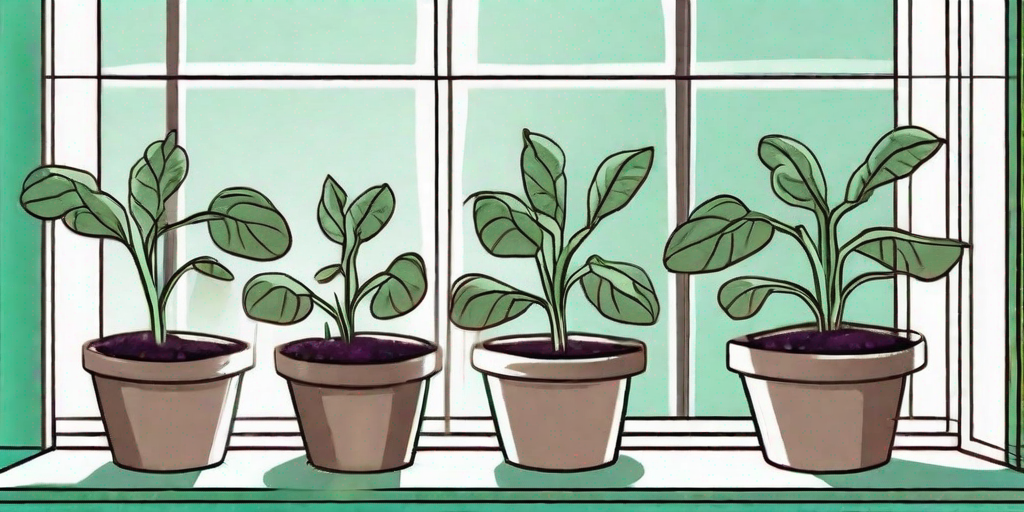
Ah, the humble eggplant. A vegetable that has been the butt of many a joke, but also the star of many a dish. Whether you're a fan of the classic eggplant parmigiana or you prefer it in a spicy curry, there's no denying that the eggplant is a versatile and delicious ingredient. But did you know that you can grow your own eggplants at home? Yes, you heard it right! And the perfect time to kickstart your indoor seedlings is now. So, let's get down to the nitty-gritty of growing eggplants, shall we?
Understanding the Eggplant
Before we dive into the how-to's of growing eggplants, it's important to understand a bit about this plant. The eggplant, also known as aubergine in some parts of the world, is a member of the nightshade family. This means it's related to tomatoes, peppers, and potatoes. It's a warm-weather crop, which means it's perfect for indoor growing if you live in a colder climate.
The eggplant is a perennial plant, but it's often grown as an annual. It can reach heights of up to 4 feet, and its fruits can vary in size, shape, and color. The most common variety is the large, dark purple eggplant, but there are also white, green, and striped varieties.
Why Grow Eggplants?
Well, aside from the fact that they're delicious, eggplants are also quite easy to grow. They're a great choice for beginner gardeners, as they don't require a lot of maintenance. Plus, they're a great source of vitamins and minerals, so they're a healthy addition to your diet.
Another reason to grow eggplants is that they're quite productive. One plant can produce up to 12 fruits, so you'll have plenty to share with friends and family. Or, you know, to hoard for yourself. We won't judge.
Getting Started with Your Eggplant Seedlings
Now that we've covered the basics of the eggplant, let's get into the fun part: growing your own. The first step is to start your seedlings indoors. This is especially important if you live in a colder climate, as eggplants need a long, warm growing season.
The best time to start your seedlings is 8 to 10 weeks before the last expected frost date in your area. This will give your plants plenty of time to mature before they're transplanted outdoors.
Materials You'll Need
Before you start your seedlings, you'll need a few materials. These include:
- Eggplant seeds
- Seed starting mix
- Seedling trays or pots
- A heat mat (optional)
- A grow light (optional)
Once you have your materials, you're ready to start your seedlings. Here's how:
- Fill your trays or pots with the seed starting mix.
- Plant the seeds about 1/4 inch deep.
- Water the seeds lightly.
- Place the trays or pots in a warm location. If you're using a heat mat, set it to around 80 degrees Fahrenheit.
- If you're using a grow light, set it up so that it's about 2 inches above the trays or pots.
- Keep the soil moist, but not waterlogged. The seeds should germinate in about 7 to 10 days.
Caring for Your Eggplant Seedlings
Once your seeds have germinated, it's time to start caring for your seedlings. This involves providing them with the right amount of light, water, and nutrients.
Firstly, your seedlings will need plenty of light. If you're growing them indoors, a south-facing window is ideal. If this isn't possible, a grow light can provide the necessary light.
Secondly, your seedlings will need regular watering. However, it's important not to overwater them, as this can lead to root rot. A good rule of thumb is to water them when the top inch of soil is dry.
Finally, your seedlings will need nutrients. A balanced, water-soluble fertilizer is a good choice. Apply it every two weeks, following the package instructions.
Transplanting Your Eggplant Seedlings
Once your seedlings have grown to about 3 inches tall and have at least two sets of true leaves, they're ready to be transplanted. If you're transplanting them outdoors, wait until the soil temperature is consistently above 60 degrees Fahrenheit and all danger of frost has passed.
When transplanting your seedlings, be sure to space them about 18 to 24 inches apart. This will give them plenty of room to grow and will help prevent diseases.
FAQs
Why are my eggplant leaves turning yellow?
Yellow leaves can be a sign of several issues, including overwatering, nutrient deficiencies, or diseases. If your eggplant leaves are turning yellow, it's important to diagnose the problem and address it as soon as possible.
How long does it take for an eggplant to grow?
From seed to harvest, it typically takes about 100 to 120 days for an eggplant to grow. However, this can vary depending on the variety and growing conditions.
Can I grow eggplants in pots?
Absolutely! Eggplants can be grown in pots, making them a great choice for those with limited garden space. Just be sure to choose a pot that's at least 5 gallons in size to give the plant plenty of room to grow.
Conclusion
And there you have it! Everything you need to know to kickstart your indoor eggplant seedlings. With a bit of care and patience, you'll be enjoying your own homegrown eggplants in no time. So why wait? Get started today and discover the joy of growing your own food. And remember, the only thing better than a fresh, homegrown eggplant is the smug satisfaction of knowing you grew it yourself. Happy gardening!











